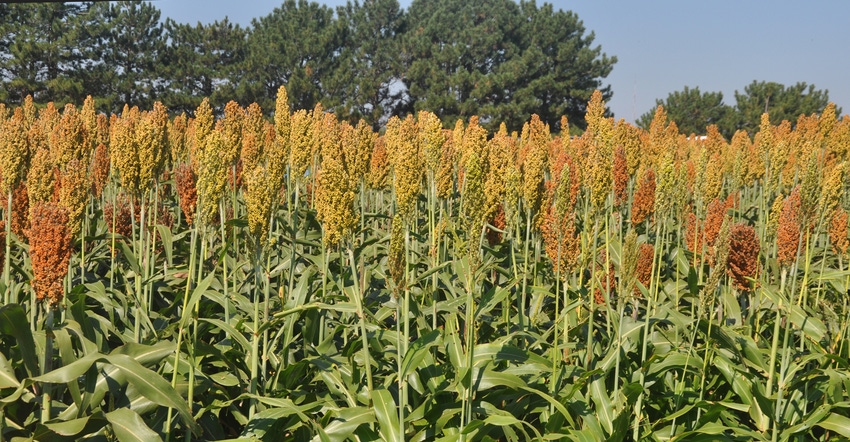October 6, 2017

Autumn is a busy time of year at National Sorghum Producers. Harvest forms for the NSP yield contest pour in, travel schedules pick up, and for those of us who also work for NSP subsidiary Sustainable Crop Insurance Services, paper and printer ink begin to fly. The sales closing date for wheat is Sept. 30, so we spend a lot of time at kitchen tables going through coverage options and discussing ways to adequately address the next year’s risks. After this, we quickly pivot to our specialty — the pasture, rangeland, forage (PRF) program.
I have written about PRF in the past. It is a pilot crop insurance product initiated by the U.S. Department of Agriculture Risk Management Agency around Abilene, Texas, in 2007. PRF insures against low precipitation relative to a historic average, and the now nationally available program was used in 2017 on 75 million acres in 20 states. Illustrating the enormous — and often overlooked — risk faced by livestock producers dependent upon grass and other forages for their livelihoods, total liabilities were a staggering $1.7 billion.
Adverse deviations from medium- to long-term weather patterns are tricky perils for insurers to cover. Unlike hailstorms, after which damage is easy to spot and quantify, injury due to lack of precipitation over a growing season often manifests itself in strange ways. Add in the fact large geographic areas must be covered in all but the most valuable agricultural production environments, and insurance for anything other than a one-time event is hard to find.
Fortunately, as it does with regular multiple peril crop insurance, RMA helps make PRF possible by assisting insurance providers as they bring the product to market in the most efficient manner possible. In doing so, the agency simultaneously protects taxpayers — since its inception, PRF has generated 32% more in premiums than it has paid out in indemnities — and helps create incredible flexibility for livestock and forage producers alike.
The hallmark of PRF is this flexibility. The coverage period is an entire calendar year, and coverage is divided and placed in two-month intervals. A producer can choose as many as six intervals and as few as two, and he or she can also select from among five coverage levels and 90 productivity factors to tailor coverage to a specific situation. With the thousands of options this flexibility provides, how should a producer proceed?
Fortunately, we have developed a mathematical program that maximizes a producer’s chances of collecting an indemnity matching actual precipitation history. For example, most producers spread coverage equally throughout the year. This type of spread undoubtedly provides the most calendar coverage, but it does not always provide the most financial coverage relative to actual precipitation risk. Our program performs several million calculations to select the best combination of intervals, coverage levels and productivity factors mathematically possible.
To quantify the difference, we reprogrammed our model to estimate indemnities using a spread and then compared our customers’ actual indemnities to these estimates. The difference was huge. The mathematical solution generated 125% more total indemnity, and it generated higher indemnities 73% of the time. Math is an incredible tool.
No product can perfectly cover weather risk, but PRF is a great way to start. Use it to the best of your ability.
Cogburn writes from Abernathy, Texas. His Twitter handle is @nspchris.
About the Author(s)
You May Also Like




